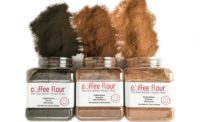Milk, cheese and eggs are dietary staples. In the U.S., on average, we consume 36.6 pounds of cheese, 268 eggs and 18 gallons of milk per person each year, according to the USDA Economic Research Service. From 2014–16, the consumption of eggs grew 1.9 percent and the consumption of cheese grew almost 6.5 percent.
Dairy foods are considered wholesome and inherently healthy products. One 8-ounce glass of milk provides 8 grams of protein, is an excellent source of calcium, phosphorous, riboflavin and vitamin B12, and is fortified with vitamins A and D. Eggs are considered a nutritional powerhouse—eggs are a high-quality protein containing varying amounts 13 essential vitamins and minerals and all 9 essential amino acids.
One of the key drivers contributing to the growth of dairy ingredients is consumer demand for clean label. According to research from Kerry, Beloit, WI, 82 percent of consumers feel that a clean label is important. Over the past several years, consumer attitudes and behaviors have shifted. People want more information than ever before about the food they eat. Initially, clean label meant a simple and concise ingredient statement that contained real, familiar and recognizable ingredients. Fast-forward to today, and consumers want to know where the food came from, how it was made, every ingredient, if the animals treated humanely, and if the farm used sustainable and responsible practices. It’s about providing authenticity and a greater level of transparency in the ingredients and products purchased and consumed.
Another factor that is contributing to the growth is consumer’s desire to increase the amount of protein in their diets. In its 2017 “Health + Wellness” report, The Hartman Group found that nearly 60 percent of Americans are now actively trying to increase their protein intake. Due to dairy’s simple, wholesome and inherently healthy attributes, it bodes well to address the needs of snack and bakery consumers.
Areas of growth
Kerry has recently seen an increase in the demand for premium dairy powders and flavors. “Premium and clean-label dairy powders are often used in applications where they can deliver claims, including made with organic, Non-GMO Project Verified, grass-fed, or rBST-free dairy,” says Carrie Schroeder, business development director, dairy. “Consumers often try to avoid ‘flavors’ on labels and, in response, Kerry has developed a technology called Intensified Dairy Taste, or ‘IDT,’ which delivers authentic dairy taste with the intensity of a flavor.”
The IDT portfolio was created using aging and culturing processes resulting in ingredients that are free from flavors, gums, phosphates and enzyme modification. The ingredient can be labeled from the named source (i.e., “butter” versus “butter flavor”) which is something consumers are looking for, Schroeder notes.
Arla Foods Ingredients, Inc., USA, Basking Ridge, NJ, notes that dairy permeate is a byproduct of whey manufacturing often used as a bulk sweetener in snacks, desserts, bakery and confectionery products. Companies value its ability to replace more-expensive milk solids in products without altering the taste, texture or having to modify the processing parameters.
A new Codex Alimentarius standard for dairy permeate powder was recently approved. “We believe it will spark the permeate market into life, generating new opportunities for a valuable and affordable ingredient that has often been overlooked,” says Inge Lise Povlsen, senior category manager, bakery and beverages, Arla Foods Ingredients. “Permeate is still a relatively new product in the food industry and the Codex standard will help to raise its profile and build trust in this natural, safe and highly functional ingredient.”
Permeate contributes to browning in applications like cakes and cookies, adding appealing color and flavor notes.
Arla Foods Ingredients also recently developed a new whey protein solution, Nutrilac PB-8420, that addresses the problem of hard protein bars. A common issue with high-protein bars is textural deterioration that occurs during shelf life, causing the bars to lose their chewy, soft texture. Incorporating Nutrilac PB-8420 into the formulation helps protein bars retain their chewy texture for 12 months or more at ambient storage conditions.
According to Brisan, Chicago, dairy concentrates reside between commodity dairy and dairy flavors and provide advantages over both. Theresa Cantafio, vice president, says that dairy concentrates can help reduce cost fluctuations and also provide a micro kill step versus commodity dairy products. The advantage versus dairy flavor is the ability to remove “flavor” ingredients from the label and improved functionality.
Use of dairy concentrates is driven by consumer desire for clean labels. “Dairy concentrates fill this consumer demand, because it’s ‘real food’ and also hits industrial food producer guidelines, because it is a scalable ingredient,” says Cantafio. “Cheese concentrates are obtained using a natural fermentation process and labeled as ‘cheese.’ They also allow for milk source and origin claims, which are key product attributes that many consumers look for to determine the level of authenticity and transparency.”
Cheese and sour cream concentrates are going into snack products, with dairy concentrates applied topically and in the dough matrix. Butter, brown butter, yogurt and cheese concentrates are used in a range of bakery applications.
In addition to clean label, consumers are also seeking new and exciting flavor experiences. “Today’s consumers seek on-trend seasoning that includes cheese combined with other savory notes to create exciting combinations, such as Cheddar with peppercorn, smoked applewood white Cheddar, rosemary balsamic Parmesan, or spicy queso,” says Lisa O’Donnell, director of R&D, dairy and culinary food systems, Kerry.
“Our team of snack taste technologists develops new snack seasonings by combining our dairy ingredients with a variety of other innovative technologies, including smoke and grill flavors or savory flavors inspired by cooking methods. Functionally, dairy seasonings or dairy combined with spicy flavors can often provide masking benefits if there are undesirable flavor notes from a high-protein snack base, for example,” continues O’Donnell.
Eggs, naturally
According to the American Egg Board (AEB), Chicago, more than 90 percent of American households have eggs in their refrigerators. The use of eggs as an ingredient is seeing renewed interest because of their extensive functionality and clean-label appeal.
AEB enlisted CuliNex, LLC, Tukwila, WA, to conduct a series of studies to compare the performance of real eggs to egg replacers across several common baking applications, including yellow cake, blueberry muffins and angel food cake. The results showed that no single egg replacer performed as well as eggs based on the attributes measured or could duplicate the multiple functional properties eggs can provide.
“Eggs are a very simple, yet very functional ingredient for bakery and snack makers,” says Elisa Maloberti, director of egg product marketing, AEB. “They have 20-plus functions they contribute to applications, from emulsification and structure to browning and adhesion. Eggs provide unique functionality in baked goods, imparting flavor, texture, aroma and more.”
Dried egg whites and egg white isolates are experiencing tremendous growth, particularly in snack, nutrition and high-protein bars, notes Jonathan Spurway, vice president of marketing, optimization and innovation, Rembrandt Foods, Spirit Lake, IA. Dried egg white products bring protein fortification and whole food/clean label benefits.
“It appears the convergence of several trends are supporting growth, which includes protein fortification, clean and simple labels with readily understandable ingredients, and Paleo and low-carb diets,” says Spurway. “For any of these trends, egg ingredients offer an excellent complete protein source with excellent flavor and functional properties, particularly dried egg ingredients, which include whole egg, yolk, egg white and egg white isolate.”
Last year, Rembrandt Foods launched a new instantized egg white powder, REMPRO 8000-SF, and is currently commercializing a new egg white protein isolate, REMPRO 8090.
Cheesy benefits
Kraft Heinz Ingredients, Glenview, IL, recently demonstrated that cream cheese is able to replace both the functionality of oil and buttermilk used in bakery applications like biscuits. Andrew Scribner, vice president and general manager, notes the use of cream cheese produces a crisp exterior and tender crumb and is easier to spread compared to some other conventional bakery fats, helping to create a flaky, multi-layered product. In addition, cream cheese imparts a rich, tangy flavor and has a longer shelf life than fresh buttermilk. He notes that cream cheese also doesn’t carry the social and environmental issues often associated with some oil products.
Ingredion Incorporated, Westchester, IL, recently launched a new modified potato starch, PRECISA 604, developed for the processed cheese industry. Ivan Gonzales, marketing director, dairy, notes that PRECISA 604 “allows cheese product manufacturers to develop more cost competitive formulations while still delivering key attributes that are desired in pizza applications, i.e. good shredding, melting and stretching. A good application for example would be on the development of a vegan mozzarella type of cheese.”
These trends will continue as shoppers seek better-for-you products, whether clean label, organic, natural, fresh, real or wholesome—and dairy ingredients are well positioned to meet all of these evolving needs.





